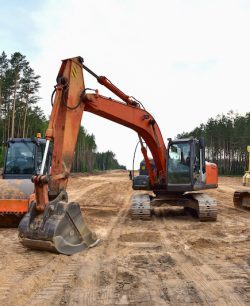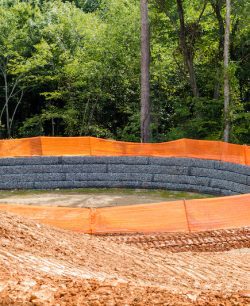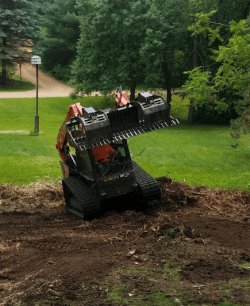What Should You Know About Land Clearing and Brush Clearing?
Upkeep of a small suburban yard with tame grass is typically pretty simple. If you have a large rural property with wild areas, it can be difficult to control the brush. It’s a big job to remove brush by yourself, regardless of whether it is overgrown or in need for maintenance. Calling in a professional like Clean Cut Outdoor who has the right equipment and experience to complete the job is often the best option. Winter is the perfect time to remove brush and weeds before they grow.
What is brush and why should I clean it?
Brush is bigger than weeds. Brush is usually woody vegetation such as tree limbs, branches, dead or unwanted bushes, trees, shrubs, vines, and stumps. Brush can include unwanted or invasive plants, as well as debris.In our region, this includes invasive shrubs such as multiflora and autumn olive, and vines such as poison ivy or honeysuckle.Brush can crowd out flowers and plants that are desirable and attract snakes, rats and other pests. This can be a safety risk and prevent families from enjoying their outdoor space.
When is the best time to remove brush?
The winter is a great time to remove brush.The vegetation is thinner, making it easier to trim, prune, rake and hoe. The soil is not disturbed or damaged by working on frozen ground. While working in cold weather, you’re less likely to encounter snakes, be bitten by bugs like mosquitoes or get poison ivy.
What tools do I need to clear brush?
It can be physically challenging to clear brush and is a step beyond using a lawnmower. While some people enjoy the job, it is not for everyone. You’ll need to have the right tools if you plan on doing it yourself. Here are a few important tools to get the job done.
- Some experts believe that a gardening machete is the best tool to clear woody brush. This is also a great way to exercise, but make sure you read the safety instructions before using it.
- A pair of loppers with a long handle is a necessity.These are like pruning shears, but with a longer handle. They can be used to cut thick vines and stalks.
- A ditch blade, also known as a briar blade or sling blade, is a J-shaped blade with a long handle that’s perfect for clearing brush and weeds. It works best for briars and other plants with spikes or prickles.
- After you have removed the larger plants, a string trimmer can be used to trim all of your grass.
- Keep a chainsaw handy to chop down dead trees, thicker branches and logs.
- The basics of gardening, such as a spring rake or a heavier hard rake. A hoe or a shovel will help you finish the job.
- Remember to wear sturdy gloves, eye protection and protective clothing.
How can I prevent brush from growing back?
Many experts suggest that to prevent brush from regrowing, you can apply a chemical herbicide such as Triclopyr on the stumps and stems of cut trees or mix it into the soil. Many gardeners have used landscape fabric or homemade vinegar and sea salt solutions as a way to stop regrowth. You can burn brush under certain conditions in our region. However, this must be done with care and according to local regulations.
Do I Hire a Professional or Clear Brush Myself?
Many of our beautiful Minnesota homes are situated on large lots that require a lot of maintenance. This goes beyond simply pulling weeds or keeping up with the mowing. Many of us have to deal with brush clearing.It’s possible for some people to do this type of work on their own. DIY is not for everyone. It’s a lot of work, and it takes a long time.If you are doing this for the first-time on your own, expect to spend several hundred bucks on equipment. You don’t want to spend the time clearing brush yourself or you would prefer to enjoy your landscape. Clean Cut Outdoor’s amazing team has all the tools and skills to get it done the way you like. We can also treat your landscape in a safe and effective manner to prevent the brush from growing. It’s time to create a plan for clearing your landscape and removing the brush.



